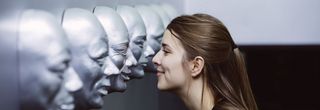The transparent man
Images of the human being in the modern sciences
Details
Explore the "Human Adventure"
Our permanent exhibition is dedicated to the human being - a topic that is as obvious as it is challenging. Its seven themed rooms address aspects of human life that are anchored in the everyday experience of all visitors. In this way, the human adventure becomes for you an experiential journey to your own body and self, to your thoughts and feelings.
An exciting and interactive journey to your own body
On almost 2,000 square meters of exhibition space, you will encounter around 1,300 exhibits, most of which come from the museum's collection. In addition, media units specially developed for our exhibition and interactive stations ensure an informative and at the same time entertaining museum experience - and all of this accessible without barriers and with numerous inclusive offers!